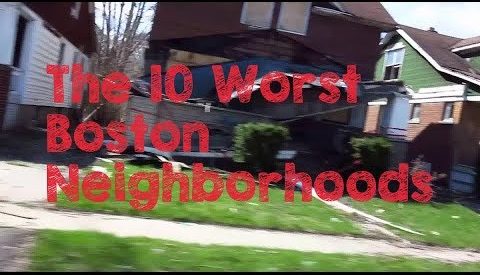In an in-depth examination of Boston’s urban landscape, this report sheds light on the city’s 10 neighborhoods facing notable challenges in 2023, with a specific focus on crime statistics. While these areas are often overshadowed by Boston’s renowned attractions, understanding the crime rates provides crucial insights into the daily realities of residents. From violent crimes to property-related incidents, we explore the complexities that contribute to these neighborhoods being labeled as the city’s most challenged.

Photo from: YouTube
Navigating Socio-Economic Struggles
This detailed analysis goes beyond statistics, providing a nuanced understanding of the socio-economic challenges plaguing the identified neighborhoods. Factors such as unemployment rates, income disparities, and limited access to resources contribute to the unique struggles faced by residents. By uncovering these realities, we aim to foster a comprehensive dialogue about the systemic issues that hinder community development in these areas.
In 2023, Boston grapples with challenges in its urban landscape as crime statistics shed light on the city’s 10 most troubled neighborhoods. Central, despite its prime location, stands out as the most perilous, with a violent crime rate soaring 321% above the national average. Roxbury follows closely, boasting a crime rate twice that of Boston, emphasizing the need for caution in navigating the area. South End contends with a crime rate 169% higher than the state average, particularly facing property-related challenges. North Dorchester‘s attractiveness is marred by increasing crime rates, especially in property crimes.
South Dorchester demands vigilance with a total crime rate 142% higher than the state average, while Mattapan raises concerns with a violent crime rate over 130% above the national average. Back Bay-Beacon Hill, despite its historic charm, grapples with a crime rate 141% higher than the state average. South Boston experiences minor property and violent crimes amid ongoing changes. Hyde Park balances safety and property concerns, and Jamaica Plain, amidst revitalization, contends with a crime rate 36% higher than the Massachusetts average, emphasizing the complexities faced by these neighborhoods.
READ ALSO: Maryland’s Most Challenging Urban Landscapes: Exploring Crime Trends In 2023
Crime Rates and Community Impact
Crime rates play a significant role in shaping the narrative of a neighborhood. From property crimes to violent incidents, we examine the impact of criminal activities on the daily lives of residents in these 10 neighborhoods. By acknowledging the challenges associated with public safety, this report aims to prompt discussions about the need for targeted interventions and community-driven initiatives to address crime at its roots.
While acknowledging the existing challenges, this report also explores the potential for positive change within these neighborhoods. By highlighting community-driven initiatives, local resilience, and ongoing efforts to overcome obstacles, we strive to present a balanced perspective. The goal is not only to shed light on the struggles but also to inspire conversations around potential solutions and future improvements for these communities.
READ ALSO: Unveiling Minnesota’s Most Challenging Neighborhoods: A Closer Look At Crime Hotspots























